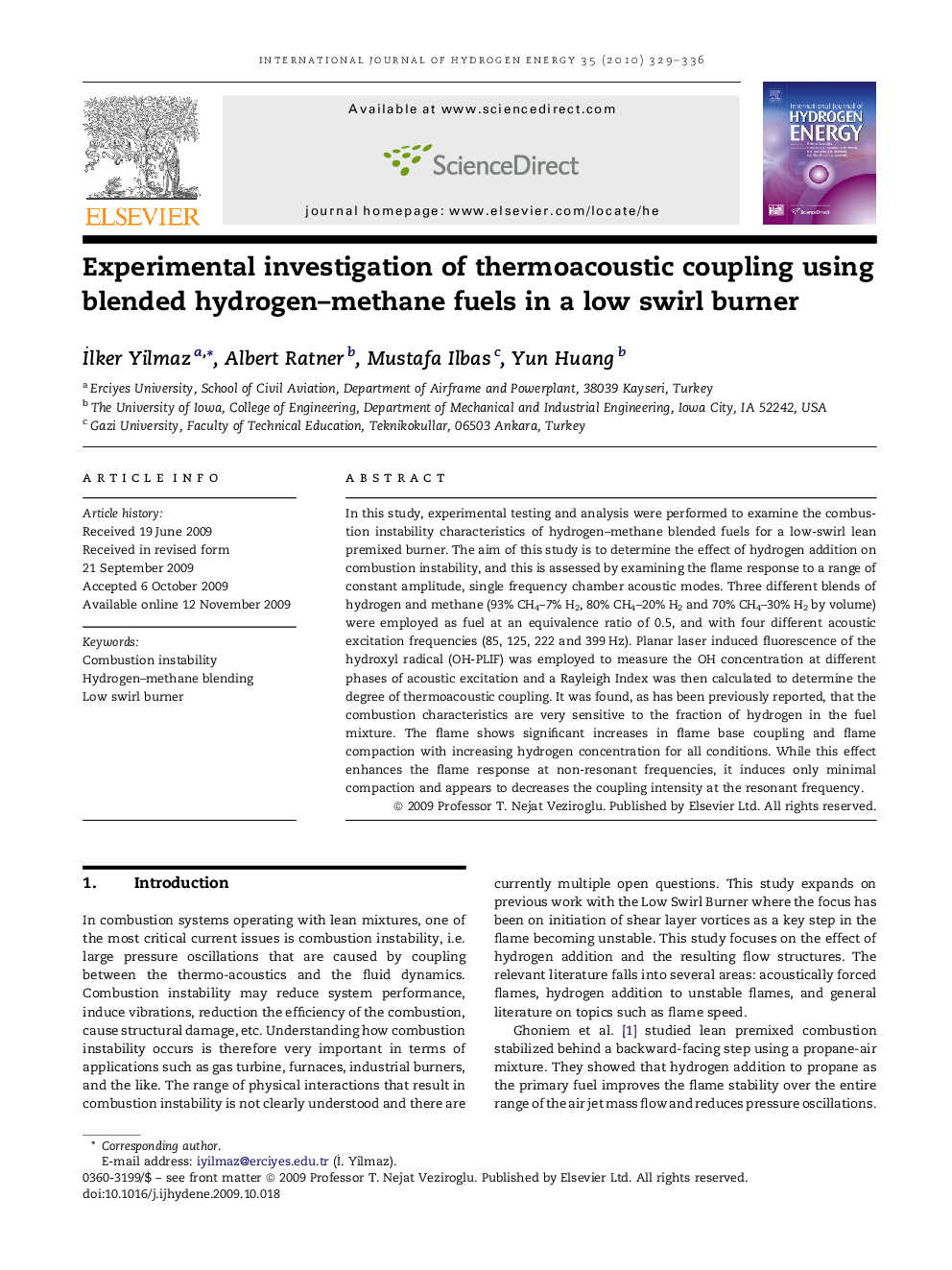| Article ID | Journal | Published Year | Pages | File Type |
|---|---|---|---|---|
| 1282998 | International Journal of Hydrogen Energy | 2010 | 8 Pages |
In this study, experimental testing and analysis were performed to examine the combustion instability characteristics of hydrogen–methane blended fuels for a low-swirl lean premixed burner. The aim of this study is to determine the effect of hydrogen addition on combustion instability, and this is assessed by examining the flame response to a range of constant amplitude, single frequency chamber acoustic modes. Three different blends of hydrogen and methane (93% CH4–7% H2, 80% CH4–20% H2 and 70% CH4–30% H2 by volume) were employed as fuel at an equivalence ratio of 0.5, and with four different acoustic excitation frequencies (85, 125, 222 and 399 Hz). Planar laser induced fluorescence of the hydroxyl radical (OH-PLIF) was employed to measure the OH concentration at different phases of acoustic excitation and a Rayleigh Index was then calculated to determine the degree of thermoacoustic coupling. It was found, as has been previously reported, that the combustion characteristics are very sensitive to the fraction of hydrogen in the fuel mixture. The flame shows significant increases in flame base coupling and flame compaction with increasing hydrogen concentration for all conditions. While this effect enhances the flame response at non-resonant frequencies, it induces only minimal compaction and appears to decreases the coupling intensity at the resonant frequency.
